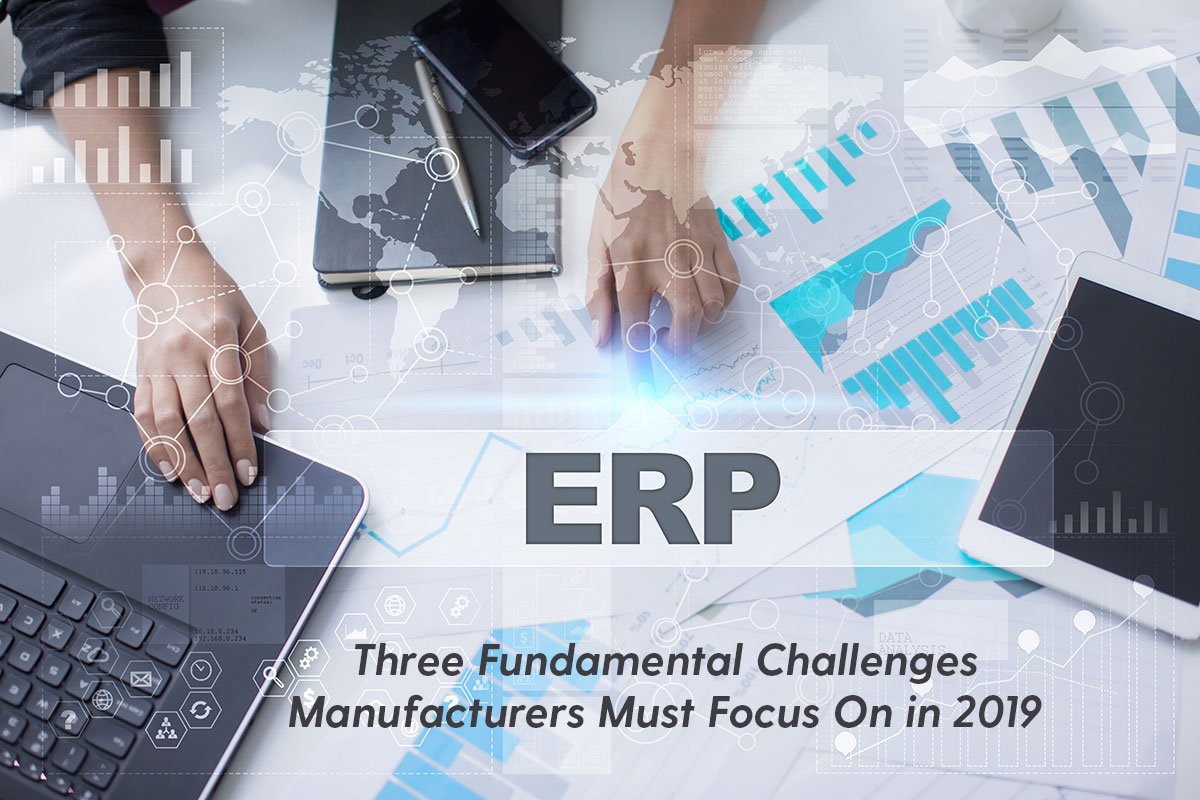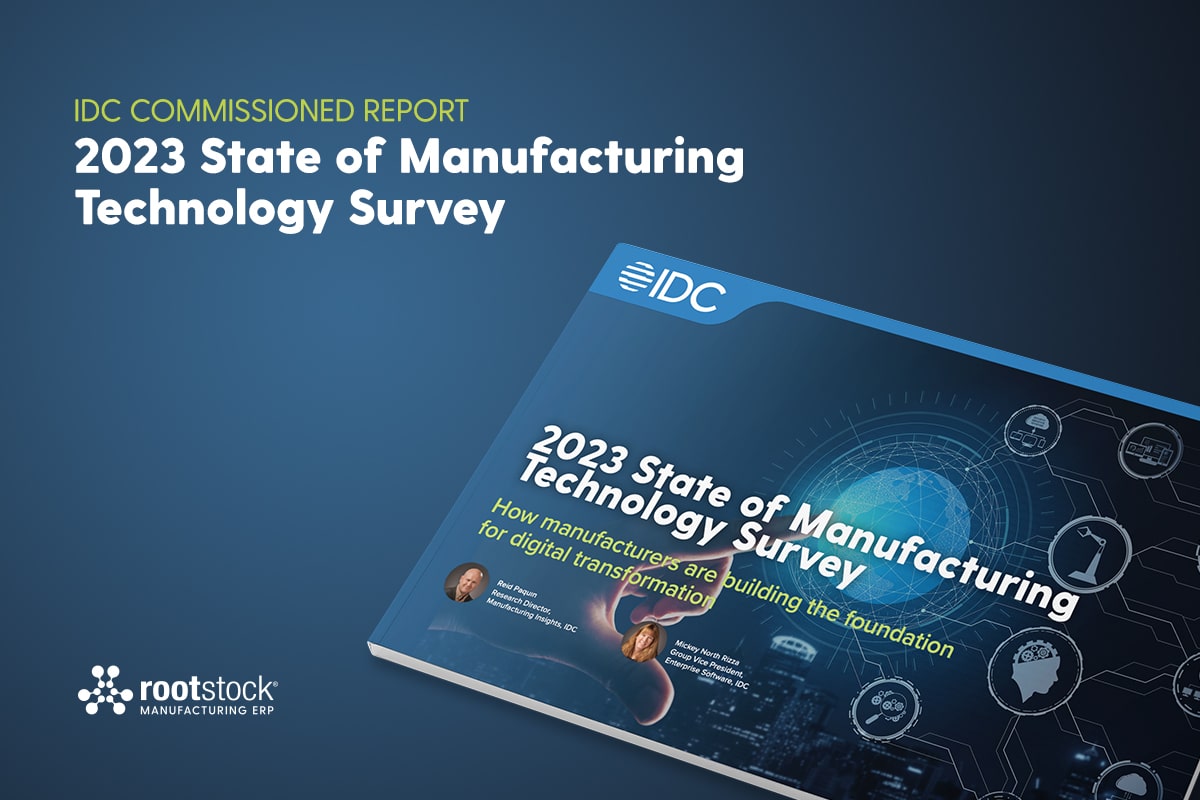Discover how the right ERP system can help you overcome specific operational challenges.
Anyone on the front lines of manufacturing today probably has a similar reaction to the title of this post: “Only three?” It’s true. Manufacturers are seemingly surrounded by challenges and change.
In this post, we want to explain why we think that three issues are particularly relevant, given market trends and other external circumstances, and what you can do to address them.
Efficient Inventory Management
Even under normal circumstances, strong inventory management is seen as a key to profitable manufacturing. But in today’s environment, it’s absolutely crucial.
First, there’s the fact that we’re in the middle of a trade war that features stiff tariffs on many goods from other countries. It stands to reason that if you’re paying more for your inventory, you want to waste or write off as little as possible, and certainly less than you’d normally find acceptable.
Second, there are the increasing demands of global customers for speed and agility in creating and delivering what you make for them. And those customers are located in previously untapped markets, where new consumer classes are on the rise. In response, many manufacturers are deciding whether they should open new facilities closer to new markets, so there’s less distance between finished product and customer. That leads inevitably to a discussion about inventory. Should it be sourced from new vendors, closer to the new facility, or can existing vendors adapt without inflating inventory costs?
Third, many regions of the world are experiencing political unrest, cultural upheaval and, in some cases, armed conflict. This introduces stress and uncertainty for any manufacturer whose supply chain includes foreign sources of raw materials or who depends on offshore OEMs. Simply put, you can’t rule out supply chain disruptions that can cause major headaches if your inventory isn’t in good shape.
Cloud ERP Helps Manufacturers Manage Inventory Efficiently
Even if you don’t face the kinds of inventory management challenges discussed here, cloud ERP still can make a tremendous difference in how well you manage your inventory.
How much inventory reduction can you obtain with a more effective ERP system? Industry analysts generally agree that between a 20 to 30 percent reduction is achievable with improved management of raw material, parts, WIP and finished goods. Even if your improvements are only half of that – 10 to 15 percent – this still results in significant savings for you.
One of our customers, 1st Light Energy, used greater visibility into current inventory levels, and transparent procurement processes, to reduce carried inventory by over 15 percent in the first year. The company was able to identify obsolete inventory and, despite growing substantially, cut inventory levels further in the second year after going live. (You can access the entire Nucleus Research ROI case study here.)
At Unionwear, implementing Rootstock cloud ERP enabled them to turn $600,000 of existing inventory – raw material they had placed under the heading of “dead stock” – into cash, as they were able to match existing inventory to new orders.
Reducing Direct and Indirect Labor Costs
You always want to keep your labor costs under control, and be as sure as possible that the people you’re investing in are being put in a position to maximize their productivity. And, in general, manufacturers are doing a good job of being productive. According to the Bureau of Labor Statistics, manufacturing sector labor productivity increased 1.3 percent in the fourth quarter of 2018; for durable manufacturing, that number doubled to 2.6 percent.
What’s happening in the market to threaten your ability to keep a lid on labor costs? The primary culprit is the increasing gap between how much skilled labor you need, and how much is actually available. And we all know what happens when labor gets scarce: the price goes up.
You’ve probably seen anecdotal evidence of this problem if you’ve been trying to hire machinists, mechanical engineers, or other skilled labor recently, but the actual numbers are pretty alarming: a survey conducted by The Manufacturing Institute and Deloitte Consulting indicates that more than 1-in-5 skilled manufacturing workers (about 2.7 million) will be retiring by 2025. Add another 700,000 people who will need to be hired due to industry growth, and the dimensions of this challenge become clear. It’s no wonder that, already, many manufacturing jobs are going unfilled. Nor is it surprising that skilled workers, when you can find them, are commanding a premium price for their labor.
(The irony is that increasing automation and the application of other new manufacturing technologies may be leading to an eventual – but not imminent – reduction in the urgency to find traditionally skilled labor, but will conversely make computing skills more important. And that’s a skill set many “old-fashioned” manufacturing workers don’t possess.)
So, it’s becoming more important that you can keep your workers focused on high-value activities, and that’s a tough thing to accomplish when you’re running your production operation on spreadsheets and emails.
Slash Your Production Labor Costs with a Modern ERP System.
Direct labor savings flow from improved scheduling that balances workload and minimizes overtime. If your manufacturing firm is currently using a combination of a standalone solution for financials in conjunction with spreadsheets, you’ll be shocked (or maybe not) by how much time is being burned feeding the spreadsheet system and emailing documents as a substitute for a real work flow system. The more you pay for labor (and, as we’ve pointed out, you’ll be paying more for skilled labor than you have in the past), the more unacceptable it becomes to waste that labor in unproductive administrative tasks.
Indirect labor savings resulting from modern ERP systems add up quickly, too. Most industry analysts believe that a ten percent reduction in labor costs is easily achievable.
Getting Forecasts and Schedules Right
Again, this isn’t a new challenge. Manufacturers have always wanted to generate accurate forecasts and, based on those forecasts, create highly efficient production schedules. Right now, however, the challenge has been heightened.
For one thing, uncertainty is the enemy of accurate forecasts and, as we’ve discussed previously, uncertainty – political, economic, market – is all around us these days. Is an economic downturn, or full-blown recession, going to dampen demand for your products? Will your suppliers and supply chain be impacted by tariffs, or other political events? Will a competitor find a way to leverage technology to disrupt your market? Under these circumstances, it can be hard to put faith in any long-term forecast.
Then, there’s the nature of customer demand today, driven by the desire for personalized manufacturing. To the extent that you engage in any sort of mass customization, how can you accurately forecast what you’re going to be producing, or how much inventory you’ll need to produce it, or where it would be most cost-efficient to produce?
Finally, there’s the matter of siloed data. If your CRM and ERP systems are not integrated, it’s very difficult, if not impossible, to get a 360-degree view of your customers. Without that complete view, you’re going to find it more and more difficult to forecast and respond to their demands.
A Modern ERP System Can Support the Agile Forecasts and Scheduling You Need Today.
Let’s be candid. Not even a new ERP system is going to dispel all the uncertainty and time pressure you face when trying to effectively forecast and schedule your production. But it will make you more capable of succeeding in the face of those challenges.
Forecasting and scheduling improvements, resulting from an effective, ERP system, will have a positive impact on purchased materials and components. Purchasing departments find they can provide firmer commitments, with predictable lead times, to the company’s vendors. This gives them the leverage to negotiate better terms, which can lead to five percent cost reductions.
Bonus Points: Accounts Receivable.
Every manufacturer we have ever talked to cites a finance challenge they want to solve: cash flow. Automating your processes gives finance the ability to produce error-free and timely invoices. This improves turns on receivable by around five percent, resulting in a significant improvement in cash flow.
You’ve got challenges. Rootstock has solutions. Contact us today to start planning your move to cloud ERP!







